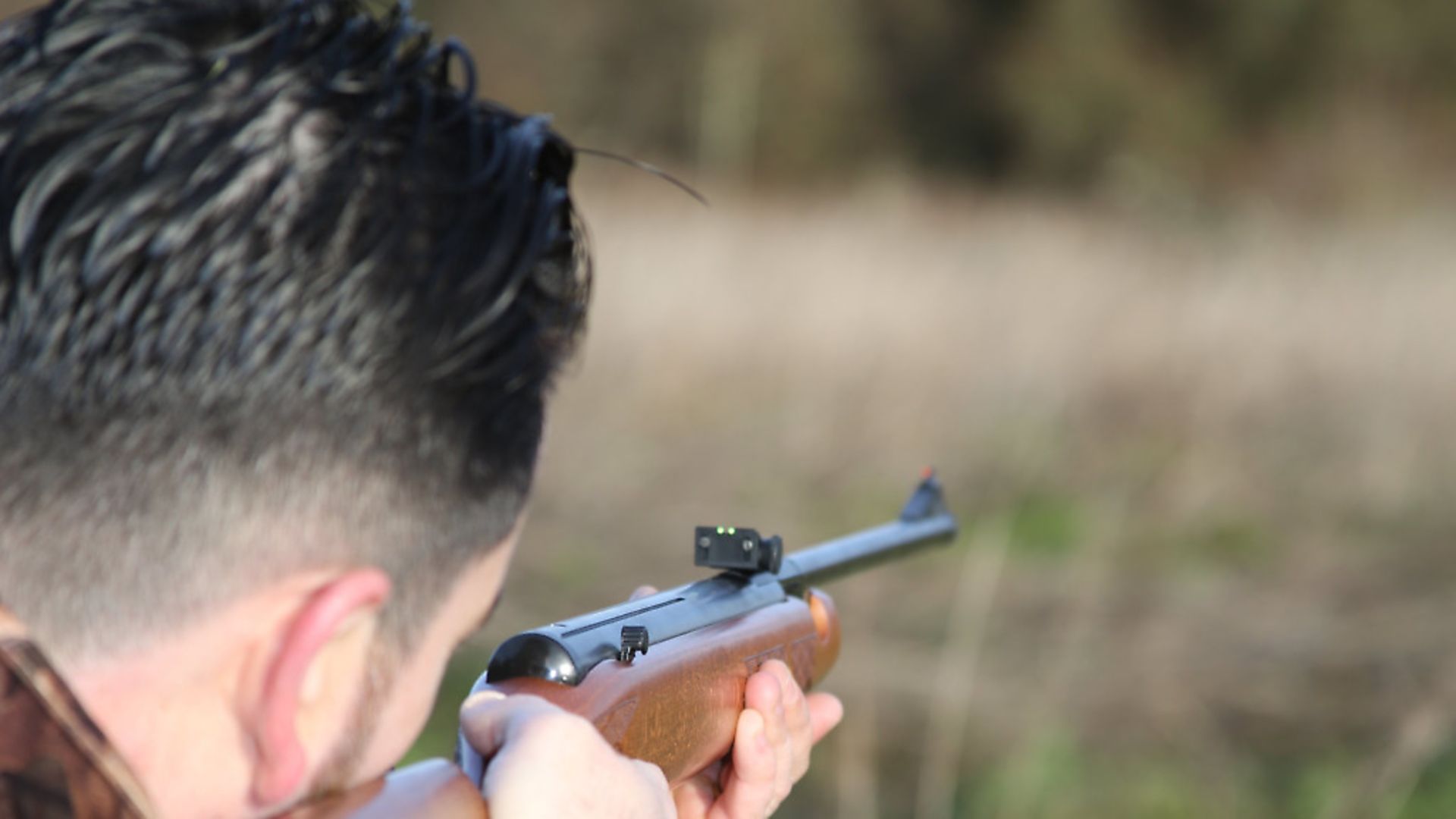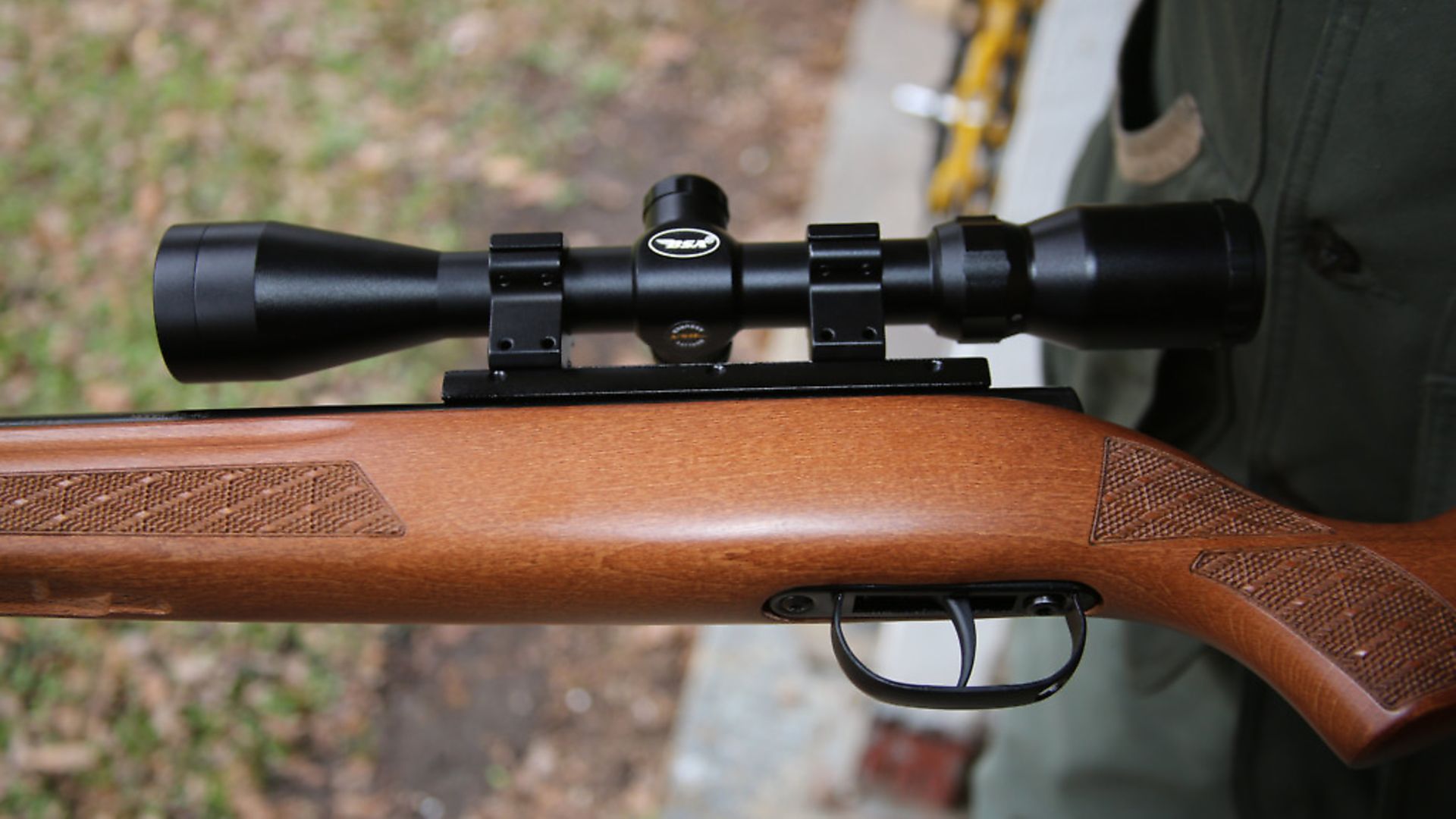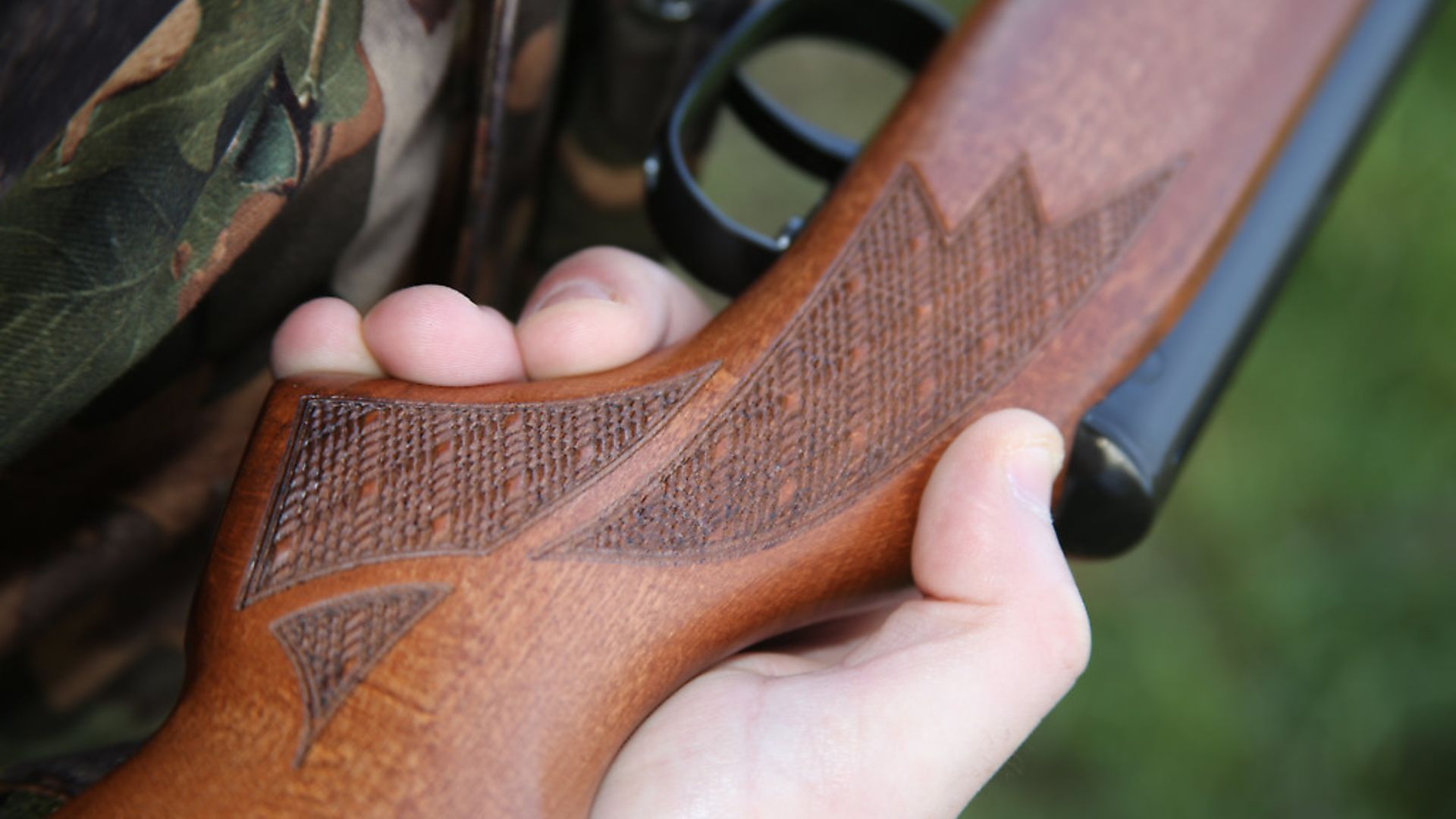The editor learns a fundamental lesson about his efficiency with modern open sights
 credit: Archant
credit: Archant
In last month’s editor’s test, I had loads of fun with a talented trio of Winchesters. The subjects included a CO2-powered pistol and a couple of break-barrel, spring-piston rifles, one of which was fitted with a set of open sights. A brief session using these sights as my only guidance system brought back memories of my distant youth and through the rose-tinted spectacles of time, I saw myself as I was then. In turn, this fostered a desire to revisit my days of open sight use and explore their potential in this world of hi-tech optical options. What could possibly go wrong?
The way we were
For anyone who wasn’t absorbed by my every reminiscence in last month’s magazine, I made all manner of immodest claims about how great I used to be using rifles with open sights. I even went lamping without a scope, and elevated my kit to the bleeding edge of technology by replacing my Airsporter’s foresight with a bit of glow-in-the-dark plastic, and illuminating the rearsight notch with another bit of glowing enhancement, in the form of a bit of ‘Glow-Globs’ putty.
As I recall, I filled game bags with that hardware, teamed with a motorcycle headlight powered by a leaking lead-acid battery that systematically ate my army-surplus hunting clothes. During the daylight hours, I ambushed rats, and made hides near sitty trees to take woodpigeon from branches, all with spring-piston rifles and open sights.
I even checked that I hadn’t imagined, or majorly modified, my exploits, and had those feats confirmed by those who were with me at the time.
I began hunting when I was in primary school, and it wasn’t until I started earning full-time wages that I could afford a scope of any kind, so I know I made do without one for years. My spectacles might well have a rosy blush to them, but the fact is, I did pretty well with what I had back then. Oh yes, those were the days...apparently.
A sight better, these days
As you’d imagine, I get to see just about every version of open sight offered to the British airgunner and quite a distance beyond. Yet, it was the set fitted to that lightweight, affordable, Winchester Model 45 that finally inspired me to test them to their limit. As it turned out, it was my own limit that was pushed beyond capability, and even further beyond my comfort zone.
 credit: Archant
credit: Archant
The test
I warmed up on some casual targets, and along with my mate, Steve, this month’s cover star, we found ourselves taking turns to smack various cans around, smiling the smiles of the happy shooter throughout the opening session. This type of shooting is built for open sights; non-demanding targets that respond pleasingly to any type of hit, mixed with a selection of ‘naturals’, such as thistle heads, pebbles and clumps of mud. As that initial test progressed, the connection rate, lack of complication and sheer speed of target acquisition combined to make me say out loud, ‘why haven’t I done this for so long?’
I felt as though I was right back in my halcyon, pre-scope days, and vowed there and then to be a born-again champion of open sights and their obviously unexploited potential for hunting use. After all, look what today’s versions have going for them, with their light-concentrating aiming dots, micro-click adjustment and that barrel-hugging proximity to the bore which makes close shots so much easier than they are with a scope sitting high above the muzzle. All I needed to do to seal this renaissance deal, was to shoot a few paper targets so I could measure my magnificence. Yes, that’s all there was to it. Look out world – here I come with a new crusade!
The paper target test
It’s a fact of airgunning life that, to truly test your marksmanship, you really do need to shoot pellets at paper. Tales of hauling home sacks full of rabbits are all very well, but if you can’t group your shots inside an inch – and that’s generous – at any range, be it 15 yards or 50, you shouldn’t be shooting at quarry at that range. The energy left in the pellet is irrelevant in the real world of hunting; it’s our ability to deliver those pellets consistently with perfect accuracy that matters most, and only a paper target will give us an honest, cut-out-and-keep, reminder of how good we really are at putting pellets where they need to go.
 credit: Archant
credit: Archant
Reality bites
Here’s the long and the short of it; I, Terry Doe, lifetime dedicated airgunner, winner of over 400 assorted trophies, and former airgun field target champion of England, Europe, and the United States of America, can’t achieve the required standard of accuracy to shoot vermin at any range beyond 12 yards with open sights. Surely not?
I was expecting to begin my open sight re-development at 20 yards or very near offer, then train in my customary obsessed fashion until I’d pushed my efficiency to 25, or even 30 yards. Not a chance. At 20 yards, my groups ‘settled’ at just below 4 inches in diameter. I didn’t even bother shooting the 25 and 30-yard targets. The pellets on the 20-yard target had crept shamefully close to the edge of the card, and there’s no way I was going to suffer the indignity of missing the target altogether.
Why so useless?
Once realisation had displaced shock and forced acceptance on me, I did what I’ve always done after I’ve shot badly, and carried out some heavy analysis. In my field target competition days, when I was truly consumed by that wonderful sport, if I’d failed miserably on a course I’d often drive to my club at any hour of the night, turn on the range lights, and shoot my way into understanding what had gone wrong.
The same, only different
These days I’m not quite as driven, but that establishing session with the open-sighted Winchester genuinely shook me up, so I drove to my dad’s and set up a target in the back garden, just like I did all those years ago. The target was a small, broken plastic flower pot and I absolutely pummelled it. Pellet after pellet hit home, and I even smashed the bits after the pot had fragmented, just like I used to so many years before. Then it dawned on me; I didn’t ever shoot at paper back then. My success was measured purely by target reaction.
Was I fooling myself?
The next question asks itself, doesn’t it? Was I simply fooling myself back in the day, or have my abilities actually declined? Certainly I was fitter back then and my eyes were far sharper, but to counter that, I had almost no shooting technique and, like everyone else, I believed muzzle energy was the be all and end all of hunting with an air rifle. I applied windage and elevation instinctively, and actually preferred my rifles to recoil horrendously in the mistaken belief that this was an assurance of ‘power’. Thinking back, it’s all a bit cringeworthy, really. Sadly, far too many still harbour such notions today, but that’s a subject for another day.
These days, I understand how airguns work, the techniques they demand to give their best, and the ballistics that govern just about everything. I’m undoubtedly a better shooter than my mercury-limbed, youthful version, and I’m using superior hardware with several tons more knowledge behind its application. Why can’t I group pellets at a piddling 20 yards with a great little sporter fitted with excellent open sights, then? Here’s my explanation, or ‘excuse’ if you prefer.
Raised demand
First, most of my hunting shots of yesteryear were taken at 30 yards or quite a bit closer, especially when out lamping with my home-made rig’s ability to make a rabbit ‘freeze’ until I got to within 15 yards of it and shot it. Even so, I took only head shots and constant practice obviously honed whatever ability I had to a level sufficient to harvest plenty of rabbits.
Again, with my pigeon shooting, I went for head shots at around 20 yards, and these were generally a matter of a telling hit, or a complete miss, and my eyes were so good in those days that I could actually see my pellets fly and compensate for aiming errors if the bird remained sitting.
I recall shooting hundreds, possibly thousands, of rats and at one particularly productive venue, I distinctly remember grouping my shots in cloverleaf clusters on a discarded 50-gallon drum. That was at a range of 10 yards, and I can still do that today, so, after analysis, things aren’t as different as I thought.
What now?
I’d still use an open-sighted rifle on rats or feral pigeons, with a range limit of 12 yards. I could take shots at ranges beyond that, with a good chance of success, but ‘a good chance’ isn’t the standard, is it? That standard demands complete confidence in a clean kill at every range we use to take live quarry.
Therein lies the real difference between the hunter I was and the one I am today. Quite simply, I know better now - and I know its right to accept my limitations.